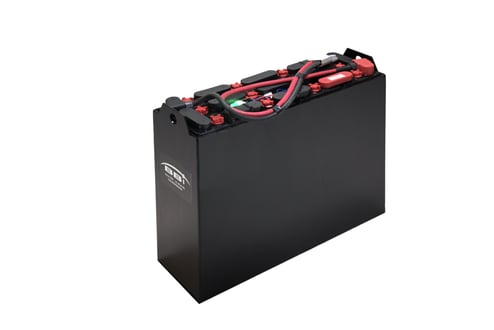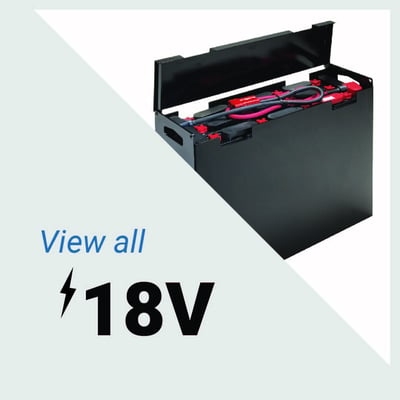
Best Practices for Industrial Batteries Charging
Introduction
In the realm of industrial operations, the efficiency and longevity of equipment depend significantly on the proper maintenance of their power sources. Among these, forklift batteries play a crucial role. These heavy-duty batteries are integral to the smooth functioning of warehouses, manufacturing plants, and other industrial settings. However, improper charging practices can lead to decreased battery life, increased operational costs, and even safety hazards. This article delves into the best practices for industrial batteries charging, ensuring that your operations run smoothly and safely.
Best Practices for Industrial Batteries Charging
When it comes to charging industrial batteries, particularly forklift batteries, adhering to specific best practices can make all the difference in performance and lifespan. Below are key strategies to ensure optimal charging:
1. Understand Battery Chemistry
Different types of batteries—lead-acid, lithium-ion, nickel-cadmium—each have unique charging requirements. Understanding these characteristics is essential.
- Lead-Acid Batteries: Common in forklifts, these require a constant current followed by a constant voltage charging method.
- Lithium-Ion Batteries: These use a more sophisticated approach involving multiple stages of charge.
Knowing what type you’re working with allows for tailored charging protocols that enhance battery health.
2. Utilize Smart Chargers
Smart chargers automatically adjust their output based on battery needs and conditions. They help prevent overcharging and undercharging—two common pitfalls that can lead to premature battery failure.
- Benefits of Smart Chargers:
- Real-time monitoring
- Automated adjustments
- Extended battery lifespan
By investing in 18 volt flat plate forklift batteries smart chargers, companies can save money in the long run by prolonging battery life.
3. Maintain Proper Temperature Control
Temperature plays a pivotal role in battery performance. Extreme heat or cold can damage batteries or reduce their efficiency dramatically.
- Ideal Temperature Range: Most forklift batteries operate optimally between 60°F and 80°F (15°C - 27°C).
- Tips for Temperature Control:
- Charge batteries in temperature-controlled environments.
- Avoid direct sunlight during charging sessions.
Maintaining an optimal temperature not only extends battery life but also enhances productivity by ensuring equipment operates efficiently.
4. Follow Recommended Charging Times
Each battery type has its own recommended charging duration. Ignoring these guidelines can result in undercharging or overcharging.
- Charging Times:
- Lead-Acid: Generally requires around 8 hours for a full charge.
- Lithium-Ion: Typically charges quicker but varies based on usage patterns.
Sticking to recommended times ensures that your forklift batteries are always ready when needed without risking damage from incorrect charge cycles.
5. Regular Maintenance Checks
Just like any piece of machinery, regular maintenance checks are vital for forklift batteries.
- Routine Maintenance Tasks:
- Inspect terminals for corrosion
- Check electrolyte levels in lead-acid batteries
- Clean connections
Conducting routine checks helps detect potential issues before they escalate into costly repairs or replacements.

6. Educate Staff on Charging Protocols
It’s essential that everyone involved in operating and maintaining forklifts understands proper charging techniques.
- Consider implementing training programs that cover:
- The importance of following manufacturer guidelines
- Safety procedures during charging
- Recognizing signs of battery distress
An informed workforce will contribute significantly to maximizing the lifespan and efficiency of your forklift batteries.
Charging Techniques That Enhance Battery Lifespan
While understanding general best practices is crucial, employing specific techniques during the actual charging process is equally important:
1. Equalization Charging
This technique involves intentionally overcharging the battery slightly at periodic intervals to equalize cell voltages and mix electrolyte solutions within lead-acid batteries.

- Benefits:
- Prevents sulfation (a major cause of lead-acid battery failure)
- Ensures uniform capacity across all cells
Equalization should be conducted as per manufacturer recommendations; typically every few months depending on usage patterns.
2. Avoid Deep Discharge Cycles
Deep discharges can severely strain forklift batteries leading to reduced performance and lifespan.
- Recommendation: Aim to recharge when the state-of-charge (SOC) falls below 30%.
Following this guideline not only preserves capacity but also maintains overall health—essentially keeping your operations running smoothly without interruptions due to dead batteries.
FAQs About Best Practices for Industrial Batteries Charging
1. What’s the ideal temperature range for charging forklift batteries?
The ideal temperature range is between 60°F and 80°F (15°C – 27°C). This ensures optimal performance during charging cycles.
2. How often should I perform maintenance checks on my forklift batteries?
Regular maintenance checks should be scheduled monthly or quarterly depending on usage intensity and environmental conditions.
3. Can I use any charger for my forklift battery?
No! Always use a charger specifically designed for your type of battery (lead-acid vs lithium-ion) to avoid damaging it through incompatible voltage or current levels.
4. What are signs my forklift battery may need replacement?
Signs include reduced runtime per charge, slower lifting speeds, visible swelling or leakage from the casing, or frequent need for recharges after minimal use.
5. How long does it usually take to fully charge a lead-acid forklift battery?
Typically around 8 hours; however, this may vary based on specific models and usage patterns so refer back to manufacturer guidelines!
6. What happens if I overcharge my forklift battery?
Overcharging can cause overheating which may lead to damage such as warped plates or excessive gassing—ultimately shortening its lifespan significantly!
Conclusion
Understanding how to properly charge industrial batteries is key to not just ensuring longevity but also optimizing operational efficiency within any warehouse or manufacturing environment using forklifts powered by these essential energy sources. By following best practices like utilizing lead-acid forklift batteries by Battery Builders smart chargers, maintaining temperature control, conducting regular maintenance checks—and educating staff—you create an ecosystem where your equipment thrives while minimizing downtime caused by failed power sources! So gear up with knowledge today; your business will thank you tomorrow!